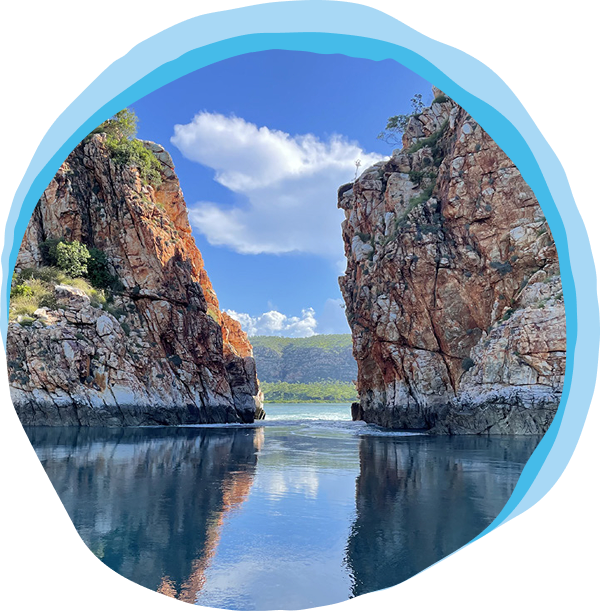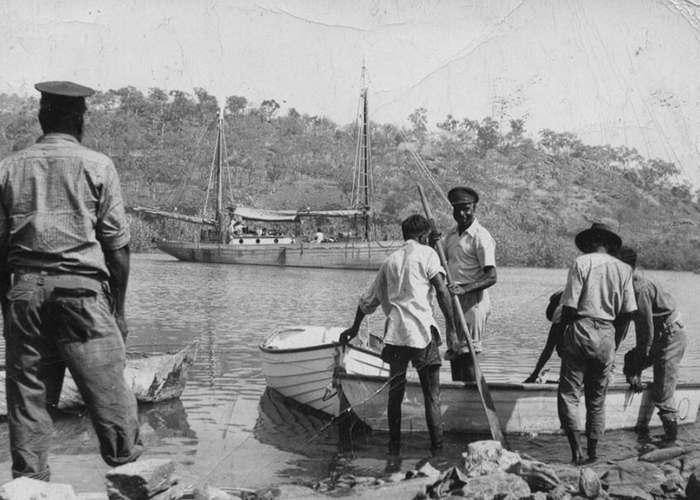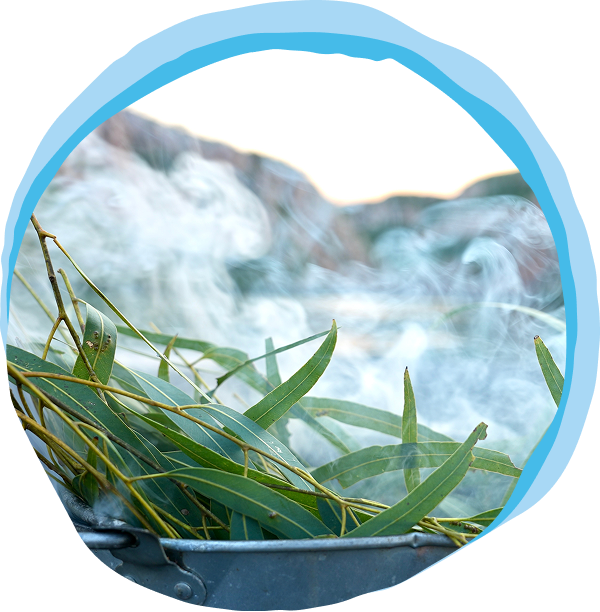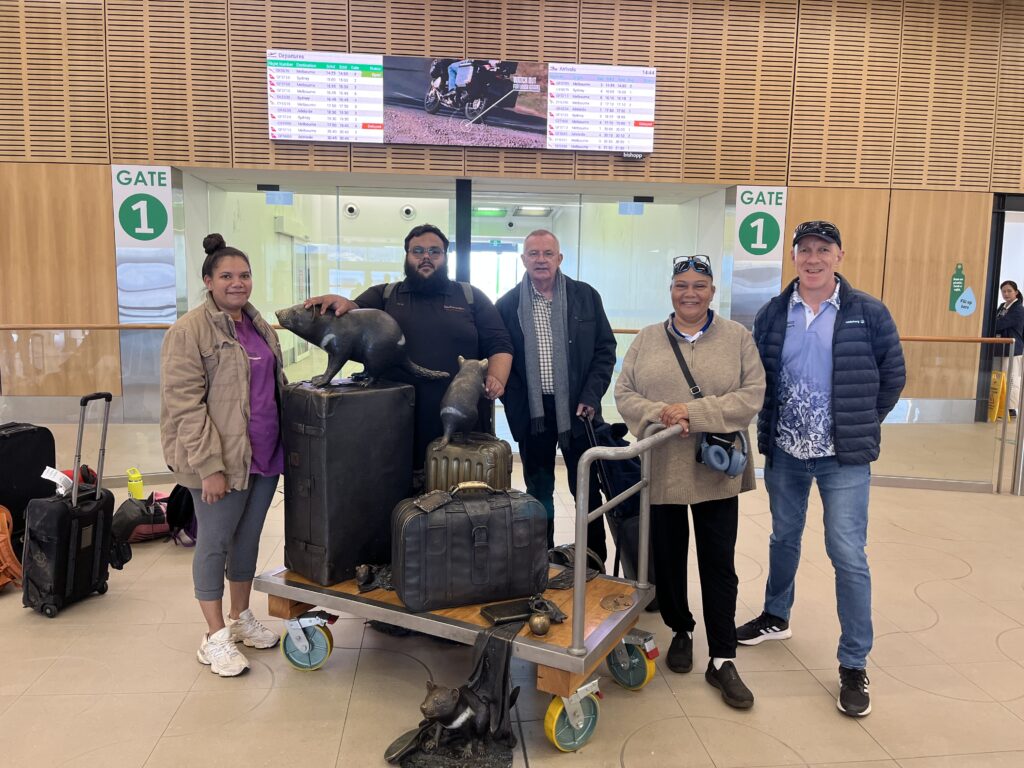
History
Dambeemangaddee People have a very long history. As our Elders have always told us; it is not about dates; it statrted from Lalai. European archealogical records show that our ancestors have been here for more than 56,000 years. We have been here from the beginning.
Dambeemangaddee saltwater people have cared for this country for thousands of years. Sustainable hunting, fishing, land management and cultural engagement were the bedrock of a flourishing lifestyle before the arrival of European settlers in the 19th and 20th centuries. Led by the Elders and the Dambimangari Aboriginal Corporation, the Traditional Owners are now working to build a successful future for our people, drawing on the strong links between the land and the Dambeemangaddee identity.
Dambemangaddee people (from dambeema meaning homelands and ngari meaning “belong to”) are determined to put more than two generations of disruptions and relocations behind them to rebuild a vibrant community. Since being moved off our Country, we have witnessed the damaging impacts of wildfires, weeds, feral animals, unmanaged visitor access, mining and industrial development. We want to return to Country, to look after it, live on our homeland and teach future generations.
You can read about how we are doing this in our Healthy Country Plan.
The Dambimangari Native Title Determination covers 16,040 square kilometres of land and 11,896 square kilometres of sea dotted with more than 720 islands – or more than 20% of all Western Australia’s islands. The Native Title Claim was lodged on 24th June 1996 and determined on 26th May 2011.
Aalmara (strangers/whitefellas) Visitors, Colonisation & Settlers
With the process of colonisation, people’s lives were changed from traditional self sufficiency to a succession of European-built communities such as the Kunmunya Mission (near Prince Regent River) in the 1920s, Sunday Island in King Sound and – with the closure of Kunmunya – Wotjulum in 1950. Dambeemangaddee Traditional Owners were moved into Mowanjum on the outskirts of Derby town in 1956 and to the new Mowanjum Community south of Derby in 1978.
Many Dambeemangaddee people have settled in the Mowanjum Community with close kin from other groups of the Wanjina Wunggurr Community including Ngarinyin and Wunambal Gaambera people. Other Dambeemangaddee people live in Derby, Perth, One Arm Point and other small towns of the Kimberley and Pilbara.


The Traditional Owners are determined to give their people the opportunity to return-to-country, to re-establish permanent and seasonal communities to keep their culture strong and rebuild the foundation that supported their ancestors’ community before Europeans arrived. Plans for modern economic and community development are designed, in part, to help fund the economic activity and infrastructure needed to rebuild these Dambimangari communities, connections to country and way of life.
Dambimangari Aboriginal Corporation
The Dambimangari Aboriginal Corporation (DAC), works for the Traditional Owners to help manage the Dambimangari Determination Area.
The Wanjina Wunggurr Dambimangari Native Title claim was lodged on the 24th June 1996. DAC was set up long before we got our Native Title. the first DAC meeting was held at yaloon on 28 October 2006, with its first Chair Donny Woolagoodja.
We have built a corporation with more than 30 staff, strong governance structures, manage our IPA and Ranger Program, negotiate robust agreements, publish books and have strong partnerships to support us.
The Corporation is lead by a board of directors including: Gary Umbagai (Chair), Leah Umbagai (Vice Chair), Kallum Mungulu, Kirsty Burgu, Marilee Liddell, Rowena Mouda, Cecelia Umbagai, Francis Woolagoodja, Pete O’Connor and Stamatis Skiadas.

Dambimangari Cultural Values Statement
The Dambimangari Aboriginal Corporation (DAC) represents the Dambimangari native title holders whose traditional lands include the Yampi Peninsula and adjacent islands in the northwest region of Western Australia. Dambeemangaddee Country includes iconic land and seascapes – some of the world’s great natural wonders.
Dambimangari has a number of community outstations including at Yaloon (Cone Bay), Coppermine Creek and Silvergull Creek. In addition, DAC, post-mining operations on Koolan Island, will establish a ranger base, tourism, base camp and a centre for cultural purposes in this setting.
The Traditional Owners are fundamentally connected to the manifestations of stories and narratives that form the very fabric of Wanjina Wunggurr community. These date from the origin of creation and are embedded richly in a spiritual realm whose significance continues to the present day.
For the DAC Traditional Owners, preserving intangible heritage such as mediating between human and non-human presences, the telling of stories of places, visiting ancestor burial sites and engaging in hunting, fishing and gathering to sustain families are all expressions of connectedness to and caring for Country. Connectedness is understood in a holistic context, where waters, land, flora, fauna and people are inextricably linked. In this context, change or disturbance to any element of the environment impacts every other element, potentially disrupting the vision established by Wandjina at the outset of creation.
These Indigenous heritage values shared with members of the wider Wanjina Wunggurr community and associated cultural practices and find expression throughout the Dambimangari lands and waters.